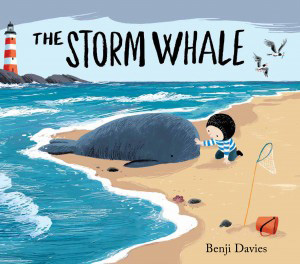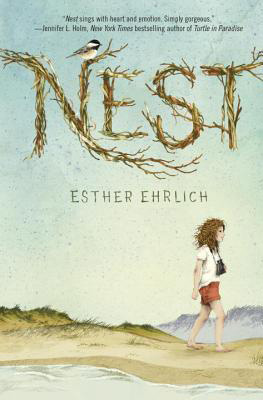If you love to read, at some point you will want to share a book you love with others. You may already do this by talking about books with friends. If you want to share your ideas with more people than your circle of friends, the way you do that is by writing a review. By publishing the reviews you write, you can share your ideas about books with other readers around the world.
It's natural for young readers to confuse book reviews with book reports, yet writing a book review is a very different process from writing a book report. Book reports focus on the plot of the book. Frequently, the purpose of book reports is to demonstrate that the books were read, and they are often done for an assignment.
A book review is a totally different task. A book review's purpose is to help people decide whether or not the book would interest them enough to read it. Reviews are a sneak peek at a book, not a summary. Like wonderful smells wafting from a kitchen, book reviews lure readers to want to taste the book themselves.
This guide is designed to help you become a strong book reviewer, a reader who can read a book and then cook up a review designed to whet the reading appetites of other book lovers.
The first question we usually ask when writing something is "How long should it be?" The best answer is "As long as it takes," but that's a frustrating answer. A general guideline is that the longer the book, the longer the review, and a review shouldn't be fewer than 100 words or so. For a long book, the review may be 500 words or even more.
If a review is too short, the review may not be able to fulfill its purpose. Too long, and the review may stray into too much plot summary or lose the reader's interest.
The best guide is to focus less on how long to write and more on fulfilling the purpose of the review.
The title of the review should convey your overall impression and not be overly general. Strong titles include these examples:
Weak titles may look like this:

Although many reviews begin with a short summary of the book (This book is about…), there are other options as well, so feel free to vary the way you begin your reviews.
In an introductory summary, be careful not to tell too much. If you retell the entire story, the reader won't feel the need to read it him/herself, and no one appreciates a spoiler (telling the end). Here are some examples of summaries reviewers from The New York Times have written:
"A new picture book tells a magically simple tale of a lonely boy, a stranded whale and a dad who rises to the occasion."
"In this middle-grade novel, a girl finds a way forward after the loss of her mother."
"Reared by ghosts, werewolves and other residents of the hillside cemetery he calls home, an orphan named Nobody Owens wonders how he will manage to survive among the living having learned all his lessons from the dead. And the man Jack — who killed the rest of Nobody's family — is itching to finish the job."
"In vivid poems that reflect the joy of finding her voice through writing stories, an award-winning author shares what it was like to grow up in the 1960s and 1970s in both the North and the South." Other ways to begin a review include:
Deciding what to say about the book can be challenging. Use the following ideas as a guide, but remember that you should not put all of this into a single review — that would make for a very long review! Choose the things that fit this particular book best.
Writing about the plot is the trickiest part of a review because you want to give the reader a feel for what the book is about without spoiling the book for future readers. The most important thing to remember is that you must never give away the ending. No one likes a spoiler.
One possibility for doing this is to set up the premise (A brother and a sister find themselves lost in the woods at the mercy of an evil witch. Will they be able to outsmart her and escape?). Another possibility is to set up the major conflict in the book and leave it unresolved (Sometimes the waiting is the hardest part or He didn't know what he stood to lose or Finding your purpose in life can be as easy as finding a true friend.)
Try to avoid using the tired phrase "This book is about…" Instead, just jump right in (The stuffed rabbit wanted more than anything to live in the big old house with the wild oak trees.)

Reviews should answer questions about the characters in fiction books or non-fiction books about people. Some possible questions to answer include:
What is the book really about? This isn't the plot, but rather the ideas behind the story. Is it about the triumph of good over evil or friendship or love or hope? Some common themes include: change, desire to escape, facing a challenge, heroism, the quest for power, and human weaknesses.
Sometimes a book will have a moral — a lesson to learn. If so, the theme is usually connected to that moral. As you write about the theme, try to identify what makes the book worth reading. What will the reader think about long after the book is finished? Ask yourself if there any particular lines in the book that strike you as meaningful.
The setting is the time and place the story occurs. When you write about the setting in a review, include more than just the location. Some things to consider:

This is where the reviewer shares his/her reactions to the book that go beyond the essential points described above. You may spend half of the review on this section. Some possible questions to address include:
Are there parts that are simply not believable, even allowing for the reader's understanding that it is fiction or even fantasy?
Some of the tips and ideas above work best for fiction, and some of it is a little too complicated for very young reviewers.
When reviewing a book of nonfiction, you will want to consider these questions:
Reviewing a book can be fun, and it's not hard at all. Just ask yourself these questions:
Remember! Don't give away the ending. Let's keep that a surprise.
Use a few quotes or phrases (keep them short) from the book to illustrate the points you make about the book. If there are illustrations, be sure to comment on those. Are they well done? Has the illustrator done other well-known books?
Make sure you include a conclusion to the review — don't leave it hanging. The conclusion can be just one sentence (Overall, this book is a terrific choice for those who…).
You can use the transition word handout at the end of the Writer's Toolbox to find ideas for words to connect the ideas in your review. If you would like to read some well-written reviews, look for reviews of books for young people at The New York Times or National Public Radio.
Most places you post reviews ask you to rate the book using a star system, typically in a range of from one to five stars. In your rating, you should consider how the book compares to other books like it. Don't compare a long novel to a short poetry book — that's not a valid comparison.
It's important to remember that it's not asking you to only give five stars to the very best books ever written.